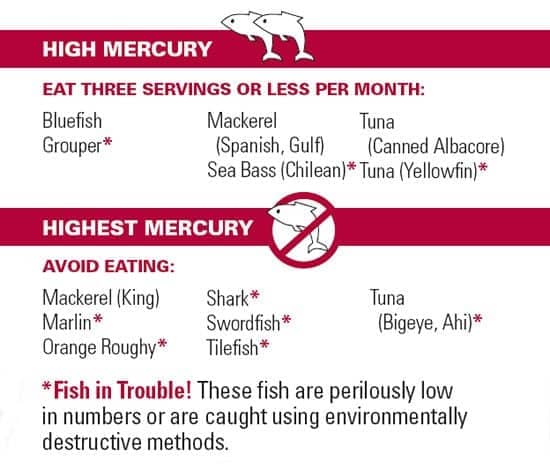Fish And Mercury - What You Need to Know

Fish provides a heart-healthy source of protein and contain a host of nutrients including omega-3 fatty acids and vitamin B12. However, the issue of mercury poisoning looms over anyone considering making fish a staple part of their diet. Do you know the facts?
What are the risks with Mercury?
According to the U.S. EPA (Environmental Protection Agency): For most people, the risk from eating contaminated fish and shellfish is not a health concern. (1) While no exact risks are known, consumers are advised to be cautious, moderate consumption, and adjust preferences for fish with lower mercury values. Ideally, no one wants to eat mercury because it is a neurotoxin thought to impair brain functioning and development. The amount of mercury anyone can process depends on their weight. This is why the Department of Health warns pregnant women and children not to consume high mercury fish.
What kinds of fish have high amounts of Mercury?
Mercury exists in our waters and subsequently in some of the fish we eat. The concentration of mercury in local-waters varies, and therefore so does, the content in any given fish. Due to bio-amplification, fish at the top of the predator chain are far more likely to contain high amounts of mercury than smaller fish. (2)
So How Do You Know What to Buy?
The following lists give you a shopping guide for what fish to buy. Feel free to print them out. The EPA also publishes these figures in a printable wallet card available here.



What about canned fish?
The amount of mercury in fish is not affected by canning. In general, avoid high sodium or oil-packed canned fish.
Are fish in my local lakes, ponds, and streams safe?
Mercury exists in the ocean and in our local waters. You can use the EPA's national database to find mercury levels for particular lakes and streams in your area.
Related
Data Sources and References
Try the recipe nutrition calculator, or daily meal planner.
Create a free account to log and track foods.
